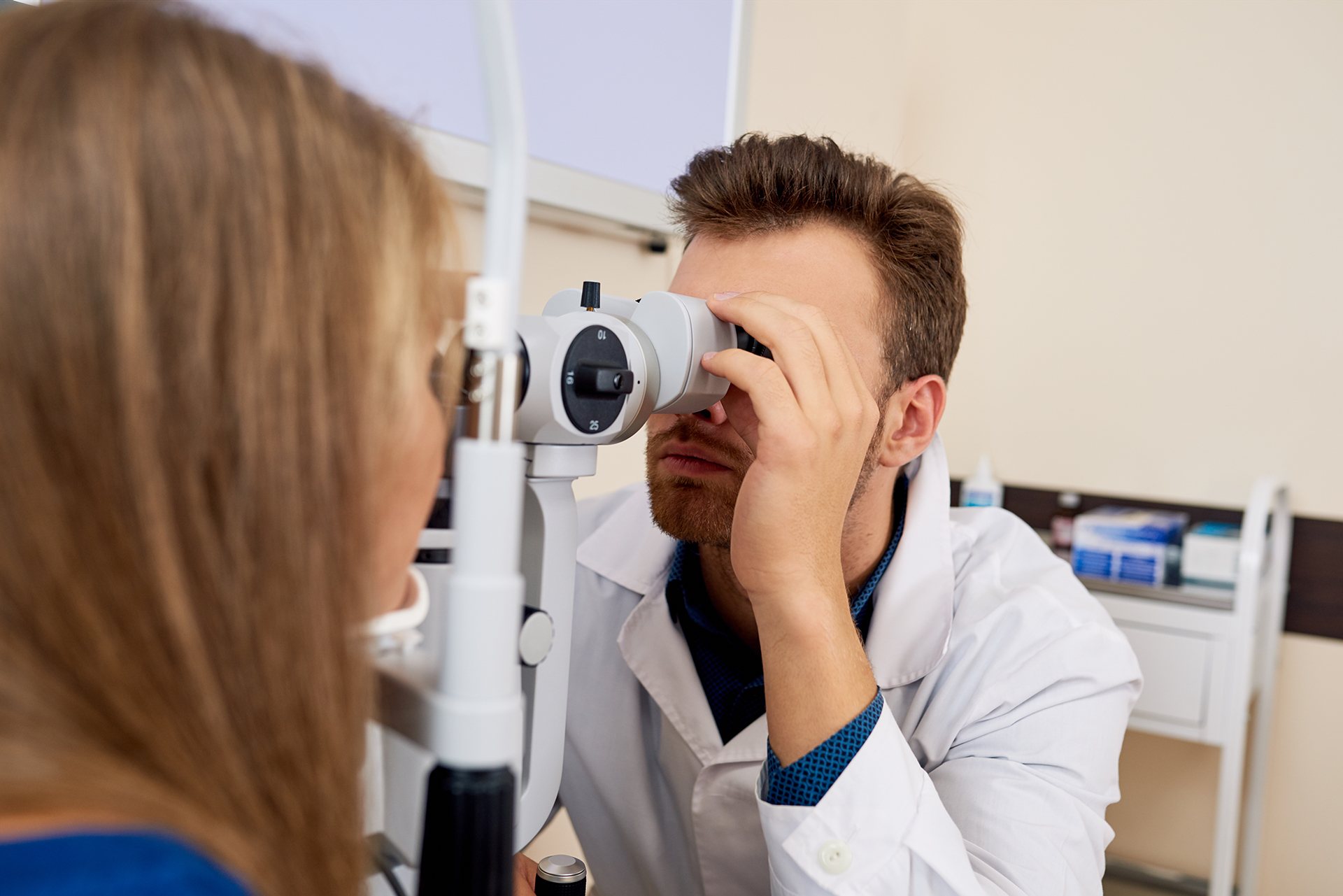
By: Dr. Marina Ceaus, Optometrist
There is a general misconception that if your eyesight has not changed then you don’t need an eye exam. To add to it, some patients feel if they are healthy and have no pain then why go for their regular eye exam. So why are regular eye exams so important, and what is your optometrist looking for? What kind of conditions can go completely undetected until you see an optometrist?
Did you know that your eye doctor can see signs of Multiple Sclerosis, Diabetes and even Increased Intracranial Pressure from your eyes? These are all things your optometrist looks for inside of your eyes at your regular eye exam, and they are all conditions that can affect young adults. More importantly these are all conditions that can occur with no symptoms or changes in vision. Here are a few conditions you can be at risk for, with no signs of symptoms, that your optometrist is looking for:
Corneal hypoxia due from contact lens overwear: Yes, yes we can see that you are stretching that 1 month lens and wearing it 6 months. And more importantly, yes this can have a significant impact on the health of your eyes. Over wearing your lenses deprives your eyes of oxygen, to compensate your eyes start to grow its own blood supply. This can cause many complications including contact lens intolerance if severe enough. And in the early to even more advanced stages you may not feel anything.
Increased Intracranial Pressure: A condition in which the pressure inside of the brain goes up. Young women, particularly those with recent weight gain, are at a higher risk. Patients can sometimes experience headaches or no symptoms. This condition will affect the Optic Nerve causing swelling of the nerve.
Diabetes: With the rise of obesity, comes the rise of diabetes. Diabetes affects the blood vessels at the back of the eye causing bleeding. Sometimes the first sign of diabetes is the changes to the vasculature at the back of the eye. A dilated exam is extremely important, especially if there is a family history of type 1 or type 2 diabetes.If left undetected diabetic retinopathy can permanently damage your vision.
Holes and Tears of the Retina: Holes and tears can happen to the tissue that lines the back of the eye. Any hole or tear is an opportunity for the liquid that fills the eye to get under the tissue and cause it to fall off the back of the eye. This has a profound effect on vision and if not treated ASAP it can cause blindness. Oftentimes holes and tears will have no symptoms but can be found at your regular eye exam.
Glaucoma: Glaucoma is called a silent thief because it can go on for decades and damage your vision without you feeling anything. This disease affects the nerve at the back of the eye and causes you to lose your side vision. The problem is that your side vision is blurry to begin with, so losing it slowly over time is difficult to perceive. Only an eye exam will allow us to measure your pressures and see if you are at risk of developing glaucoma.
These are only some reasons why it is critical that you have your annual eye exams. However, apart from those conditions there are dozen other ones that are just as serious or even more dangerous that will only be caught with a regular eye exam.
Dr. Marina Ceaus is an Optometrist practising in Streetsville. She provides comprehensive eye exams, pediatric eye exams, infant eye exams, and vision therapy. You can book an appointment with her through her website www.drceausoptometry.com.
